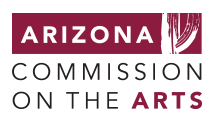The article below is a repost from the National Endowment for the Arts Art Works Blog.To view the original post, click here.
Molly Lakin-Hayes is the former Deputy Director of the Arizona Commission on the Arts, and is now the Deputy Director of South Arts (formerly the Southern Arts Federation), a nonprofit regional arts organization in Atlanta, Georgia.
Be ArtsReady!
October 25, 2010
Washington, DC
by Mollie Lakin-Hayes, Deputy Director, South Arts
Artsready.org is a go-to site for readiness planning. Image courtesy South Arts.
Years ago, a techie advisor on NPR described the world as two groups of people: “Those that back up their data…and those who will.”
We don’t like to admit it, but we’re all prone to unexpected events that can cause us short-term problems or major long-term damage—not just data loss but accidents, losing things we care about, and changes in our personal and professional lives. If we do a little preparation and thinking ahead, these interruptions to our lives can be handled more easily and with less angst.
Arts organizations and artists aren’t any different. Any number of calamities, large and small, can occur that affect their ability to keep working. We all can recall the tragic impact on the cultural community from Hurricanes Katrina and Rita, the September 11, 2001 attacks, and the wildfires in the San Diego area. But the more “mundane” interruptions can cause serious harm. “The Show Must Go On” isn’t true if the museum’s sprinkler system breaks and floods the stored artwork in the basement, the touring dance company suffers a bout of flu, or a fire in a potter’s studio destroys their kiln, their inventory, records of their clients and sales, and the glaze formulas they’ve spent a career developing.
So what’s an overstressed, under-resourced artist or organization to do? Why, Be ArtsReady, of course!
To “Be ArtsReady” means an artist or arts organization has more than just their data backed up. (And by the way, that means backed up on a regular schedule and stored securely offsite, so you can pick up the pieces if your facility and server are damaged.) It means they’ve got a Plan B in place for those things critical to bringing the arts experience to audiences. Like an alternate location picked out in case their own space is affected. A communications plan in place so they can quickly communicate new and urgent information to their audiences, staff, board, donors, artists, and the media. A plan for who’s in charge if their board chair or director is suddenly indisposed. Assurance that they have the right insurance to protect their unique artistic assets.
Today, there’s no need for an arts organization or artist to try to figure out their Plan B all by themselves. Developed by regional arts organization South Arts, the ArtsReady website has compiled tips, samples, resources and links to jump-start readiness planning. “12 Tips” are things that can be done easily and quickly to cover the basics. A link to the Studio Protector offers visual and craft artists a handy (and fun!) overview of “Protecting Your A’s” (that’s art, assets and archives). Links to organizations across the country that help with emergency readiness and recovery are all in one place. And, a new online ArtsReady tool launching in 2011, supported in part by the NEA and The Andrew W. Mellon Foundation, will let organizations assess, in just an hour, where they are vulnerable, and will then guide users through building their own ArtsReady plan.
The unexpected will always happen. But ArtsReady can help make sure our artists and organizations can keep working, keep creating, and keep connecting to audiences.


